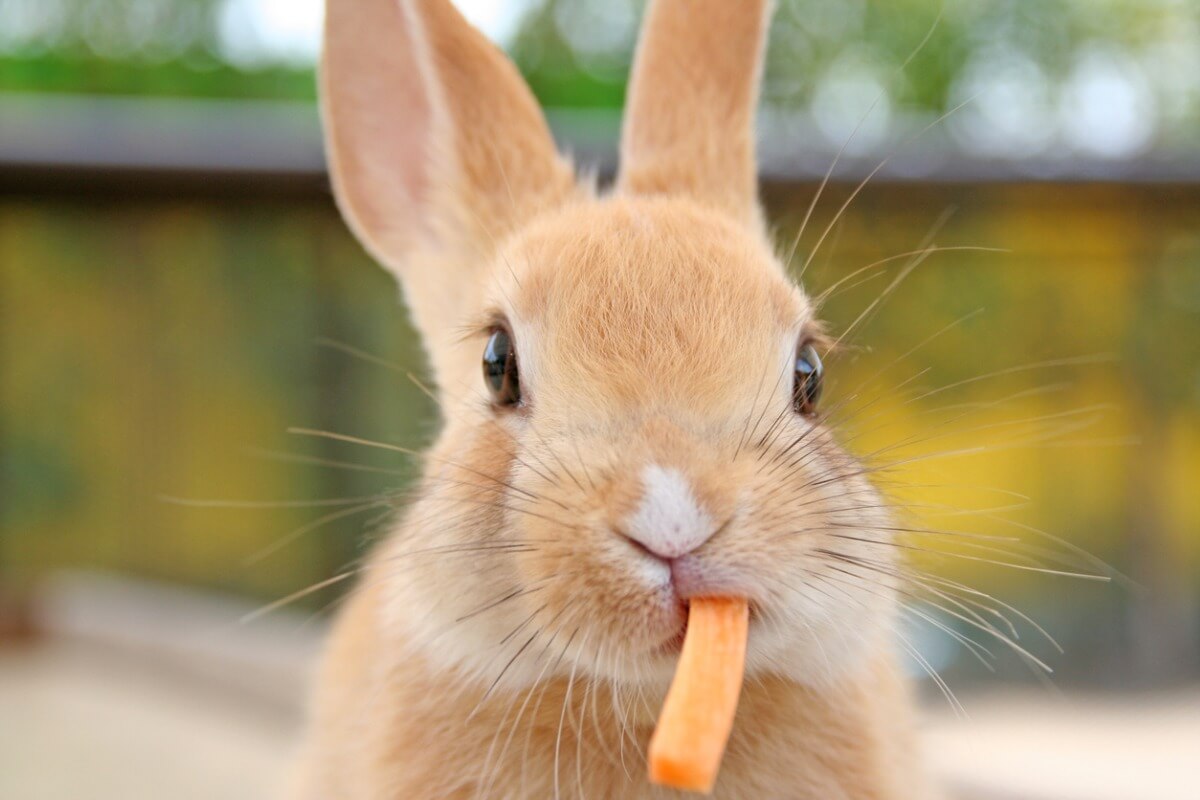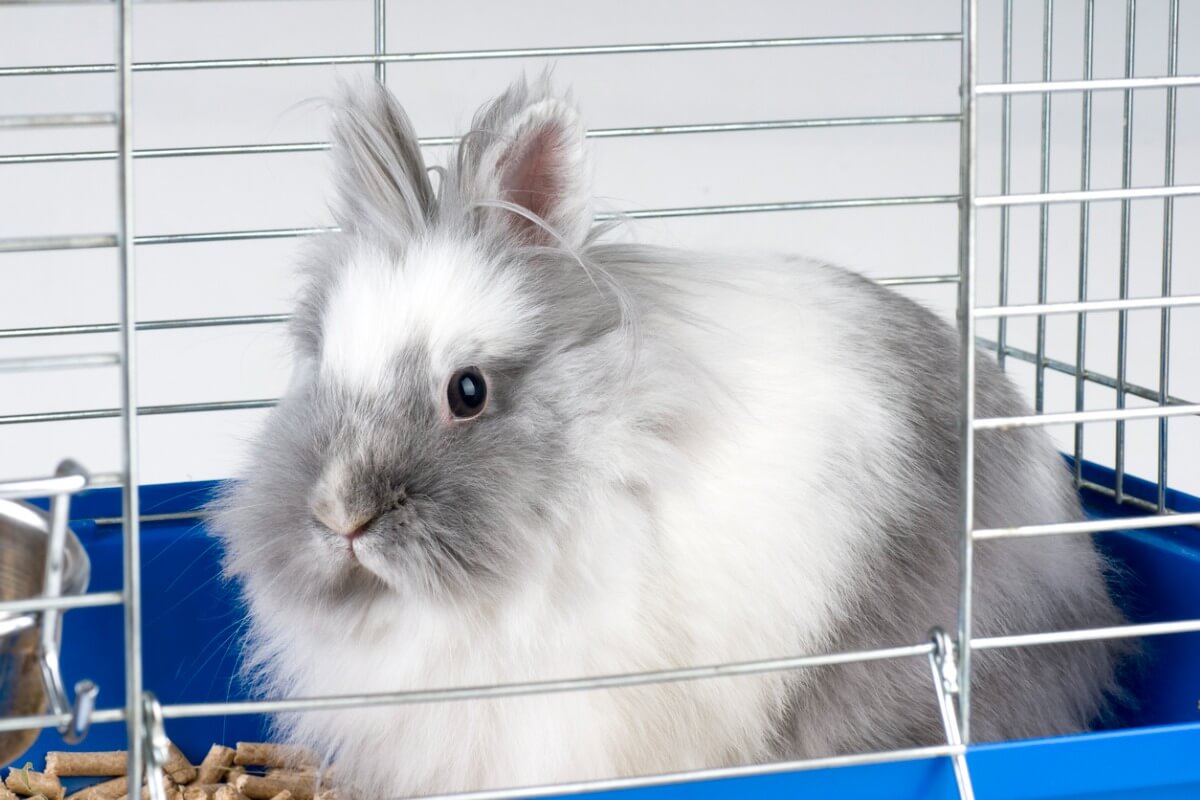Rabies in Rabbits: Causes, Symptoms and Treatment

Regardless of the size, breed, or species of your pets, each one of them deserves to have proper care to ensure that their lives are maintained in the best possible conditions. Some pathologies, such as rabies in rabbits, often have a fatal outcome, which is why it’s so important to know about the development of the disease and thus avoid complications.
Keeping your rabbits safe from any type of disease will ensure that their quality of life remains constantly stable. In addition, having the necessary tools to identify them will reduce the risk of contagion among other species, including humans. Keep reading!
What is rabies in rabbits?

Rabies in rabbits is one of the most well-known diseases worldwide due to its characteristic symptoms. It’s a pathology of viral origin capable of affecting a rabbit’s nervous system, as well as that of any other warm-blooded animal. This virus can be found almost anywhere in the world, with the exception of some islands and polar regions.
Over time it has been observed that the animals with the highest rate of contagion have been dogs, cats, bats, and cattle. This list includes some wild species such as mice, foxes and raccoons. In the case of rabbits, rabies isn’t very frequent, except in situations where they have been attacked by an infected animal and managed to survive.
How is the disease transmitted?
The rabies virus in rabbits has the option of entering the body of its victims in different ways. Its main vehicle is saliva, and, for this reason, it’s easy for it to penetrate after a bite or after contact with a wound. It’s also frequently transmitted through the mucous membranes of the eyes, nose, and mouth and even by inhalation.
Once the microorganism has managed to enter your pet’s body, it needs to go through an incubation period, which can last for several months. The duration of this stage will depend on factors such as the amount of virus inoculated, as well as the innervation of the area where the virus has entered. During this period, the disease usually goes unnoticed.
Symptoms
When rabies in rabbits begins to show itself, the prognosis is not good due to the damage already caused. Although this pathology is rare in rabbits, it’s important to identify the signs and stages that your pet may go through once it has been infected.
To better understand the behavior of the disease, let’s divide rabies in rabbits into its two different presentations.
Rabies furiosa (furious rabies)
After the virus has completed its incubation, it begins its journey to its final destination: the brain. Its presence causes severe encephalitis (inflammation of the brain), which consequently alters its behavior. Your rabbit may show the following signs:
- Aggressiveness: it often attacks and tries to bite
- Radical changes in behavior: from acting very aggressive, he/she becomes depressed
- Difficulty eating and drinking (due to facial paralysis)
- Convulsions
- Salivation and drooling
- Failure of the lungs (as a result of respiratory paralysis) that can lead to death
Paralytic rabies
Rabbits with paralytic rabies begin to show various localized paralysis in the mouth, tongue, neck and face. During the manifestation of the signs, your pet won’t show any signs of aggression, on the contrary, it will appear weak, depressed, and with abundant drooling. As the rabies virus in rabbits progresses, it paralyzes vital organs and finally causes death.
Rabies treatment
So far there’s no specific treatment for rabies in rabbits. The chances of survival are almost nil. All animals with a presumptive diagnosis of rabies should be quarantined immediately. The risk of infecting other animals and causing zoonosis is very high; therefore, extreme care must be taken.
Affected rabbits don’t usually survive after being attacked or bitten by another carrier animal; if they do, the authorities must be notified immediately. It’s considered an eradicated disease in Europe and controlled in America. However, it’s still responsible for thousands of deaths in Asia and Africa, hence its importance in public health.
How to prevent the disease from spreading?

Rabies vaccination is used preventively in many species, but, in the case of rabbits, its application isn’t highly recommended due to the side effects it could trigger. In addition, when these friends are pets, they’re usually kept in closed and safe spaces, where they’re away from outside risks.
The veterinarian is responsible for confirming the diagnosis of rabies in rabbits. If the rabbit tests positive, it will have to be put down. The animals and people who have lived with the patient will have to be kept under continuous observation. If you receive a bite from your rabbit, wash the area with abundant water and go to a hospital where you will receive immediate attention.
The list of diseases that can affect rabbits is very long. To keep them safe from them, it’s important to monitor their health and have a constant professional medical follow-up.
Both your pets’ and your own well-being depend on how you look after them throughout their lives. Prevention, and making sure their vaccination schedule is up to date, is the best way to protect them.
Regardless of the size, breed, or species of your pets, each one of them deserves to have proper care to ensure that their lives are maintained in the best possible conditions. Some pathologies, such as rabies in rabbits, often have a fatal outcome, which is why it’s so important to know about the development of the disease and thus avoid complications.
Keeping your rabbits safe from any type of disease will ensure that their quality of life remains constantly stable. In addition, having the necessary tools to identify them will reduce the risk of contagion among other species, including humans. Keep reading!
What is rabies in rabbits?

Rabies in rabbits is one of the most well-known diseases worldwide due to its characteristic symptoms. It’s a pathology of viral origin capable of affecting a rabbit’s nervous system, as well as that of any other warm-blooded animal. This virus can be found almost anywhere in the world, with the exception of some islands and polar regions.
Over time it has been observed that the animals with the highest rate of contagion have been dogs, cats, bats, and cattle. This list includes some wild species such as mice, foxes and raccoons. In the case of rabbits, rabies isn’t very frequent, except in situations where they have been attacked by an infected animal and managed to survive.
How is the disease transmitted?
The rabies virus in rabbits has the option of entering the body of its victims in different ways. Its main vehicle is saliva, and, for this reason, it’s easy for it to penetrate after a bite or after contact with a wound. It’s also frequently transmitted through the mucous membranes of the eyes, nose, and mouth and even by inhalation.
Once the microorganism has managed to enter your pet’s body, it needs to go through an incubation period, which can last for several months. The duration of this stage will depend on factors such as the amount of virus inoculated, as well as the innervation of the area where the virus has entered. During this period, the disease usually goes unnoticed.
Symptoms
When rabies in rabbits begins to show itself, the prognosis is not good due to the damage already caused. Although this pathology is rare in rabbits, it’s important to identify the signs and stages that your pet may go through once it has been infected.
To better understand the behavior of the disease, let’s divide rabies in rabbits into its two different presentations.
Rabies furiosa (furious rabies)
After the virus has completed its incubation, it begins its journey to its final destination: the brain. Its presence causes severe encephalitis (inflammation of the brain), which consequently alters its behavior. Your rabbit may show the following signs:
- Aggressiveness: it often attacks and tries to bite
- Radical changes in behavior: from acting very aggressive, he/she becomes depressed
- Difficulty eating and drinking (due to facial paralysis)
- Convulsions
- Salivation and drooling
- Failure of the lungs (as a result of respiratory paralysis) that can lead to death
Paralytic rabies
Rabbits with paralytic rabies begin to show various localized paralysis in the mouth, tongue, neck and face. During the manifestation of the signs, your pet won’t show any signs of aggression, on the contrary, it will appear weak, depressed, and with abundant drooling. As the rabies virus in rabbits progresses, it paralyzes vital organs and finally causes death.
Rabies treatment
So far there’s no specific treatment for rabies in rabbits. The chances of survival are almost nil. All animals with a presumptive diagnosis of rabies should be quarantined immediately. The risk of infecting other animals and causing zoonosis is very high; therefore, extreme care must be taken.
Affected rabbits don’t usually survive after being attacked or bitten by another carrier animal; if they do, the authorities must be notified immediately. It’s considered an eradicated disease in Europe and controlled in America. However, it’s still responsible for thousands of deaths in Asia and Africa, hence its importance in public health.
How to prevent the disease from spreading?

Rabies vaccination is used preventively in many species, but, in the case of rabbits, its application isn’t highly recommended due to the side effects it could trigger. In addition, when these friends are pets, they’re usually kept in closed and safe spaces, where they’re away from outside risks.
The veterinarian is responsible for confirming the diagnosis of rabies in rabbits. If the rabbit tests positive, it will have to be put down. The animals and people who have lived with the patient will have to be kept under continuous observation. If you receive a bite from your rabbit, wash the area with abundant water and go to a hospital where you will receive immediate attention.
The list of diseases that can affect rabbits is very long. To keep them safe from them, it’s important to monitor their health and have a constant professional medical follow-up.
Both your pets’ and your own well-being depend on how you look after them throughout their lives. Prevention, and making sure their vaccination schedule is up to date, is the best way to protect them.
All cited sources were thoroughly reviewed by our team to ensure their quality, reliability, currency, and validity. The bibliography of this article was considered reliable and of academic or scientific accuracy.
- Correa P. La rabia, manifestaciones clínicas, transmisión, prevención y tratamiento. México. Publicado en 1981. Consultado el 06 de enero de 2022. Disponible en: https://fmvz.unam.mx/fmvz/cienciavet/revistas/CVvol3/CVv3c04.pdf
- Rodríguez E. Rabia, riesgos y control. Análisis de la situación en España. León, España. Consultado el 06 de enero de 2022. Disponible en: http://www.colvema.org/WV_descargas/RABIA-24042014160433.pdf
- Besteiros M. Rabia en conejos – Síntomas y tratamiento. España. Publicado el 21 de febrero de 2018. Consultado el 06 de enero de 2022. Disponible en: https://www.expertoanimal.com/rabia-en-conejos-sintomas-y-tratamiento-23255.html
- Fernández L. Rabia en conejos: cómo tratarla. Madrid, España. Publicado el 12 de noviembre de 2018. Consultado el 06 de enero de 2022. Disponible en: https://www.bekiamascotas.com/articulos/rabia-conejos-como-tratarla/
- Rabia en Conejos causas, síntomas y tratamiento. España. Consultado el 06 de enero de 2022. Disponible en: https://todosobremascotas.com/conejos/rabia-en-conejos-causas-tratamiento/
- Rabia. Nueva York, Estados Unidos. Consultado el 06 de enero de 2022. Disponible en: https://www.health.ny.gov/es/diseases/communicable/rabies/fact_sheet.htm
This text is provided for informational purposes only and does not replace consultation with a professional. If in doubt, consult your specialist.








